One of the most overlooked yet essential elements of MMORPG design isn’t found in mechanics, graphics, or even content cadence. It’s something deeper and more primal: a core struggle — a unifying conflict that permeates every layer of the world.
This struggle isn’t just narrative flavor. It’s the glue that binds player identity, the backdrop that justifies faction PvP, and the mythic context that gives player actions meaning. World of Warcraft understood this. EverQuest never quite did.
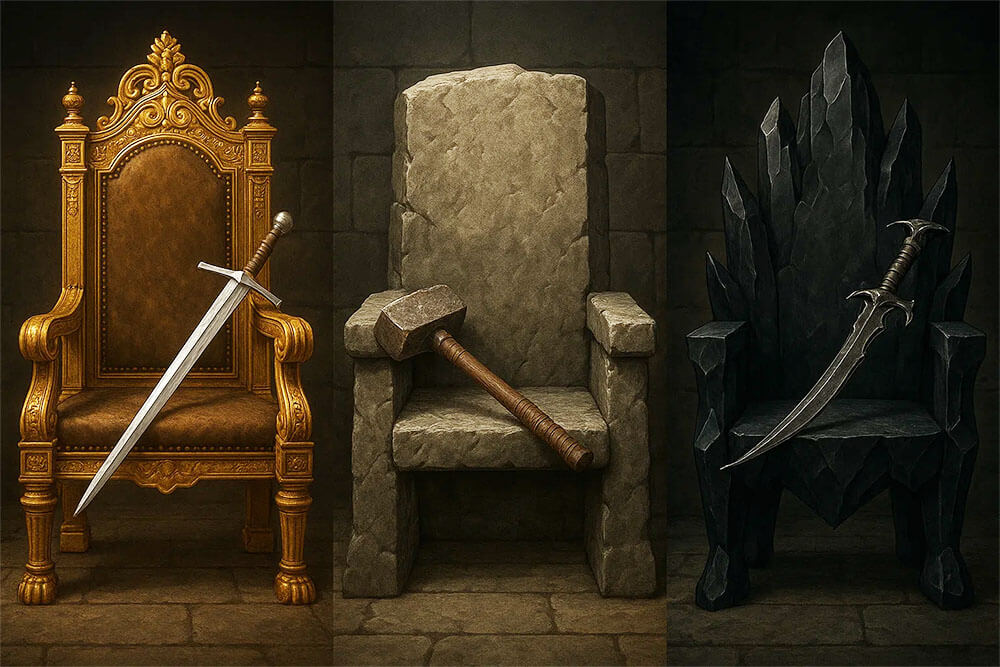
In this article, we explore how the absence of a core struggle in EverQuest weakened its long-term cultural stickiness — and how any future EverQuest MMORPG must reclaim it to stand a chance of surviving in a world of narrative-rich, loyalty-driven online worlds.
Azeroth Had a Core Struggle — Norrath Didn’t
From the moment World of Warcraft launched, players were drafted into a core struggle — the Alliance vs. the Horde. This binary division was more than branding; it was an identity. It showed up in questlines, PvP battlegrounds, zones, and player chat. It sparked memes, tribalism, and loyalty.
Compare that to EverQuest. Races had their own homelands, and the world was vast and dangerous — but there was no central force dividing players or shaping the narrative. Even good and evil races could group together. Over time, this lack of meaningful division reduced all races to a spreadsheet of racial bonuses. EQ players chose Ogre warriors not for lore, but because they were immune to frontal stuns. Iksar monks were popular because of their innate regeneration. Min/maxing triumphed over immersion.
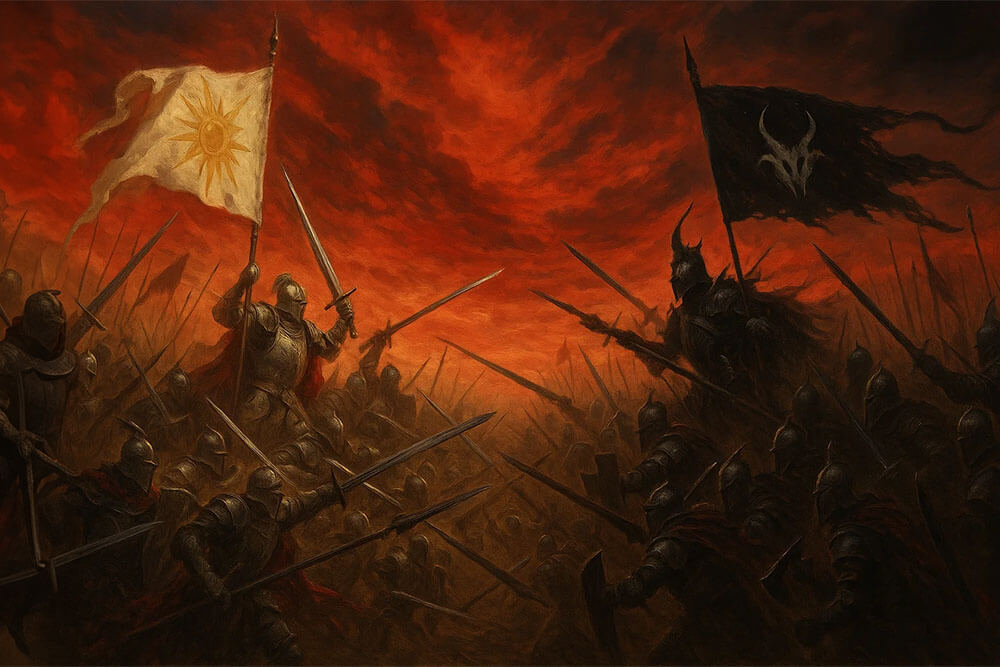
The Plane of Knowledge Broke the World
If there was a tipping point in EverQuest, it was the launch of the Planes of Power expansion and its convenience hub: the Plane of Knowledge. What had once been a world defined by dangerous travel, regional identity, and factional mystery was now a glorified subway system. Every race, every class, every alignment now hung out in the same hub city. Expedience destroyed distance. Utility replaced identity.
Even World of Warcraft, despite its early brilliance, flirted with the same mistake. In The Burning Crusade and Wrath of the Lich King, Blizzard introduced Shattrath and Dalaran — neutral capital cities meant to centralize players for raids and services. While they were not as egregious as EQ’s Plane of Knowledge — since both retained faction-specific banks and areas — they nonetheless diluted the day-to-day presence of factional identity. By placing Horde and Alliance under the same roof, Blizzard unintentionally undermined the emotional distance that made “us vs. them” feel real. The practical need for convenience began to gnaw away at the mythic divide that made the world compelling.
EverQuest went from a world of cultural tension to a gear treadmill. The sense of wonder — and more importantly, of belonging — evaporated. Players no longer came from anywhere. They just logged in, geared up, and warped to the next XP spot.
Without a Core Struggle, There’s Nothing Worth Fighting For
EverQuest had gods, dragons, zones, and epics. But it lacked a reason to fight that extended beyond loot. There was no shared enemy. No existential threat. No struggle that united some and divided others.
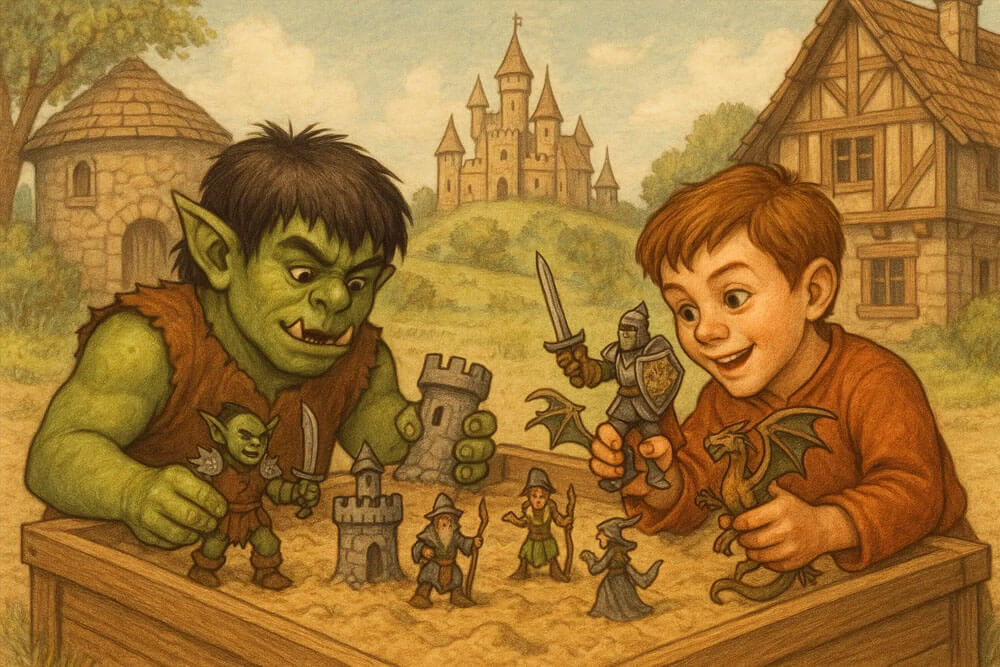
By contrast, Chris Metzen could walk on stage at BlizzCon and yell “For the Horde!” — and the crowd would erupt. WoW created loyalty. Identity. Tribal memory. No such moment exists in EverQuest fandom, because the world never gave players something bigger than themselves to fight for.
The Rise of Legacy Servers — and the Split Personality of EverQuest
To its credit, EverQuest also pioneered what would become one of the most successful retention tools in modern MMORPG history: legacy servers. Time-Locked Progression (TLP) servers let players re-experience the world as it was in 1999, expansion by expansion. Today, EverQuest effectively exists as two different games — the modern “live” version bloated with convenience systems and the TLP version which caters to nostalgia and challenge. But neither has resolved the missing ingredient: a true, unifying struggle. The popularity of TLP proves that players still crave community, identity, and consequences — things best delivered through meaningful conflict, not just legacy content.
It’s worth noting that the original producer of EverQuest eventually left Darkpaw Games and was hired by Blizzard to oversee the WoW Classic division — the very branch responsible for reviving and preserving the original World of Warcraft experience. This is no small detail. The WoW Classic community has become a lifeline for Blizzard, as millions of players reject the feminized, sanitized, and ideologically neutered tone of modern Retail WoW. They long for grit. For danger. For meaning. And above all, for mythic conflict. Classic WoW survives because it preserved what Retail threw away.
A World Without a Cause
When EverQuest launched in 1999, it had strong racial theming. Barbarians came from Halas, Trolls from Grobb, Erudites from Erudin. These were distinct cultures with distinct aesthetics. But over time, those racial identities eroded.
By the time Planes of Power released, the introduction of the Plane of Knowledge turned Norrath into a glorified transit hub. Every race and class mingled in a sterile library-city. Convenience had triumphed over immersion. Players no longer had to traverse dangerous zones or visit their hometowns. The result? A bland homogenization of the game world.
There was no longer a reason to be a Dwarf, a High Elf, or a Dark Elf. Cultural uniqueness gave way to travel efficiency and min-maxing.
EverQuest II and the Betrayal of Faction Design
EverQuest 2 made a half-hearted attempt to fix this. It launched with two cities: Qeynos (good) and Freeport (evil). At first, this seemed promising — finally, some moral and narrative friction!
But then came the “Betrayal” quest, which allowed any player to swap sides and essentially erase their prior identity. This undermined the entire point of having factions. If anyone can switch teams whenever they want, then the teams mean nothing. It’s like letting a diehard Yankees fan become a Red Sox fan for the weekend just because they didn’t like Fenway’s prices.
If you can swap allegiances without cost or commitment, then the original loyalty meant nothing. This was core struggle as window dressing — not as a real force shaping the game world.
Factions exist to divide — and that’s not a bad thing. In fact, it’s essential.
Faction Loyalty Is Player Loyalty: The Business Case for Mythic Rivalry
In professional sports, team identity is everything. Fans are irrationally loyal to teams because of city pride, color schemes, rivalries, and shared history. They bleed for their side.
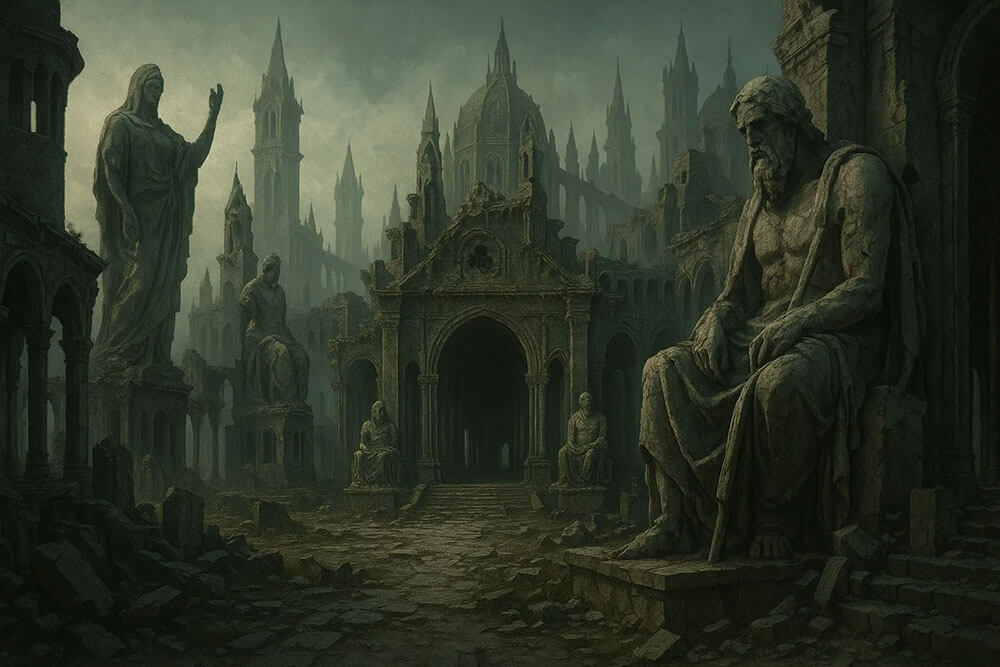
World of Warcraft tapped into this same phenomenon with the Horde and Alliance. It wasn’t just about race and class — it was about belonging. Players shouted “For the Horde!” like it meant something. Because it did.
This isn’t just emotional — it’s financial. Faction loyalty improves:
- Retention — players stick around because they’re part of something larger.
- Engagement — people log in to defend, raid, or represent their faction.
- Community — guilds, PvP groups, and rivalries form naturally.
When everyone can play with everyone, when races and classes mean nothing beyond their stat bonuses, the game world becomes a shopping mall — convenient, lifeless, forgettable.
Designers Must Learn to Say No
One of the great failures of modern MMO design — especially in live-service games — is caving to player demands that erode the very structure of the world.
Players will always ask for:
- More convenience
- Fewer restrictions
- Faction neutrality
But designers must protect the soul of the world. They must say “NO!” — even when it’s unpopular. Why? Because players are short-sighted. They optimize for now. Designers must optimize for the myth and the long-term health of their world.
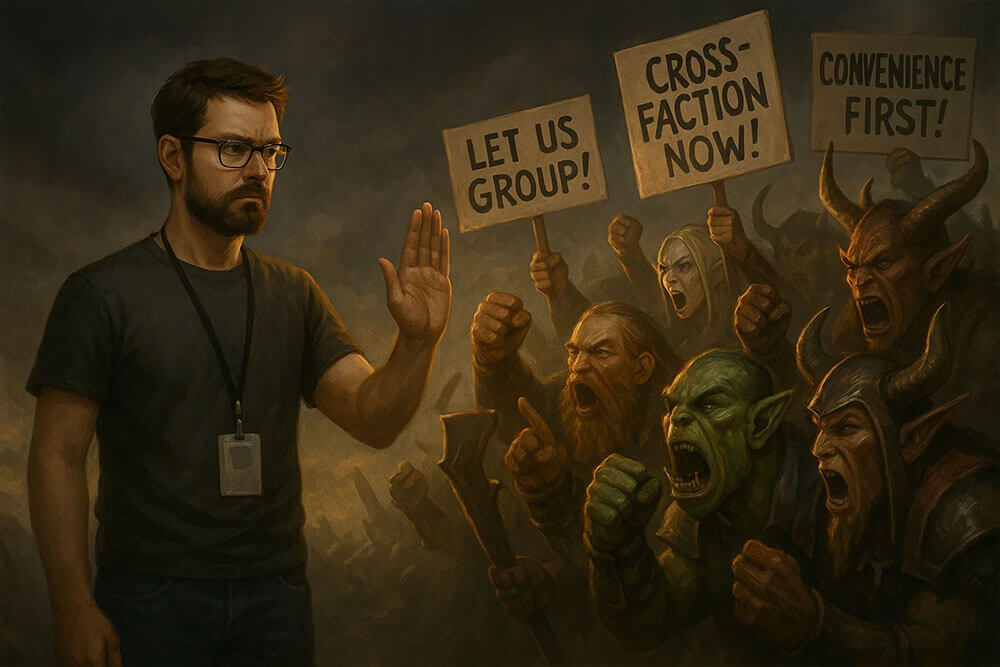
Letting an Ogre and a High Elf group together because “my friend plays that race” sounds nice — but it annihilates the cultural tension that makes fantasy matter. Good fantasy has boundaries, rivalries, and taboos. When you remove them, you’re not being inclusive — you’re being forgettable.
Looking Ahead: If There’s to Be an EQ3, Let It Be Worth Fighting For
This article isn’t written out of bitterness. It’s written out of hope. Because the dream of Norrath isn’t dead — it’s just waiting for someone to reclaim it with conviction.
An EverQuest 3 is not only possible, it’s inevitable. Whether through Daybreak, Darkpaw, or another studio rising from the ashes, there will be another attempt to breathe life into this legendary world.
But if EQ3 follows the same trajectory of convenience, homogenization, and mechanical optimization, then it will fail — culturally if not financially.
What must be done?
- EQ3 needs true, unbreakable factions.
Not just good vs. evil, but cultures with clashing values, religions, and histories.
A three-faction system — Good, Neutral, and Evil — could thrive if they are distinct, ideologically anchored, and mechanically enforced. - Faction choice must have permanent consequences.
Who you group with, who you trade with, which gods you worship, and what cities you can enter should all be shaped by this choice. It must feel real. - Race must return to being cultural, not statistical.
Choosing to be a Troll, an Elf, or a Gnome should mean something about your place in the world — not just your DPS output. - Narrative must be mythic, not modular.
The gods, the cities, and the conflicts should feel ancient, divine, and inevitable. This is not just a game — it’s a civilization simulator with swords. - The world must demand emotional investment.
If a player doesn’t feel pride in their home city, faction, or race, they won’t stay. A good MMO binds players to the world with story, meaning, and myth — not just loot and level-ups.
If EverQuest 3 is going to succeed, it needs to reclaim the fire that was never properly lit in EQ1 and abandoned in EQ2. As Brad McQuaid once told me at a fan meetup, EverQuest was just meant to be a sandbox. That was the root of the problem. A sandbox may be fun to play in, but without a reason to build, defend, or destroy, it will never feel like home.
Conclusion
Designers must remember: without tension, there’s no loyalty. Without purpose, there’s no myth. And without myth, there’s no world.
This isn’t just advice for EverQuest. It’s a wake-up call for every fantasy MMORPG in development today.
Games like Pax Dei may have stunning visuals and sandbox ambition — but without a core struggle, they feel aimless. Elder Scrolls Online once had rich faction identity and restrictions, but has steadily eroded it in favor of cross-faction convenience.
If you don’t stand for something in your world, neither will your players.
—Wolfshead

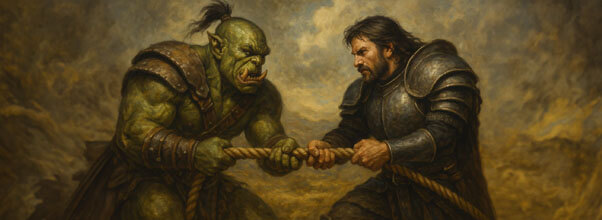
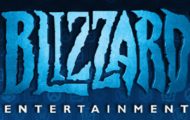


I played a lot of WoW since 2006 and for me personally the Alliance vs Horde conflict was never the main standpoint, although I thought it was a cool backstory. I enjoyed playing WoW for different reasons – exploring the zones, world, reading quests and immersing myself into the world, meeting new people and facing challenges and learning how to overcome them.
What kept me playing for so long was how cohesive the world felt and how well it molded with the experience of the player. I always had the urge to come back and play more.
Of course WoW was my first MMORPG and it set the standard for me on what I want to expect in an MMORPG. Now looking at EverQuest, I only see the inferior predecessor to Vanilla WoW. I like the idea of EQ1, but I can’t stand playing it, because it doesn’t feel as easy to get into like WoW. Every simple action for me feels like a struggle and I don’t even have 60 minutes of play time in the game in my entire life.
I think when EQ1 released and it was the first of its kind people enjoyed it a lot because it was new and different and they were experiencing an MMORPG for the very first time. And I think nobody cared that there is no Horde vs Alliance, because people played for the same reasons as I did with WoW – they wanted to explore the world, get immersed in it and interact with other players in tackling challenges together or compete against one another.
The reason why the EQ1 (even EQ2) formula doesn’t work is because it’s already been done and people aren’t interested in it anymore. Most people with common sense saw that WoW did things better and made them more fun so they migrated there, only some very hardcore fans remained in EQ and people who are held by the nostalgia of their first MMORPG being EQ1.
I also don’t think a lot of people who play WoW ever cared about the Alliance vs Horde and I don’t think this is the thing that kept the game so popular for such a long time. There are a lot of PvE servers where people enjoy things that aren’t about the war between the two factions and they are very popular. Also it doesn’t require to have two (or more) definite factions in order to have PvP in the game, there can be different excuses to have PvP, be it battlegrounds or arenas without two factions fighting each other.
LOTRO had this with “freeps vs creeps” and people liked it, but from what I heard the mode was largely abandoned by the developers for many years and only now they remembered it exists and did add some content to it.
ESO had three factions at war with each other, did that make the game more interesting? I always thought it would be cool if WoW had it, but after playing ESO, I realized it doesn’t change anything. They even made the game super easy like LOTRO because they thought they were catering to the majority since most of what I see from both games is people showing off their cosmetics, RPing or spending a lot of time on professions or trading, but not PvP.
Finally, I don’t think WoW’s Horde vs Alliance was ever a big deal, not in Vanilla, and especially not in Retail, because if we take every expansion into account, the developers on multiple occasions made the villain a common enemy of both factions and made both factions enter a partial truce and unite against the common villain thus diminishing the conflict between both and making it feel more insignificant to the point where people aren’t even sure at this point what is the state of this love-hate relationship between the Alliance and the Horde. Also I think in Retail the story has been basterdized so much that it doesn’t even make sense anymore and the only people who still play Retail are those suffering from Stockholm Syndrome who can’t get unhooked from their drug which is WoW and are deathly afraid of trying another MMORPG or moving to a Vanilla private server such as Turtle WoW for example to experience something more authentic and new.
So largely, I think this comparison between EQ and WoW is not valid, because what made WoW popular and EQ unpopular was the game mechanics and the presentation to the player. In WoW, be it Vanilla or Retail, you can just install the game and start playing it without any prior knowledge on an MMORPG. With EQ, even if you have years and thousands of hours spent into MMORPGs, you have to unironically spend 4-5 hours on the internet watching videos and reading guides in order to learn the absolute basics on how to navigate the game like talking to NPCs, taking quests, completing them, using the map, using the inventory and whatnot. Such a barrier is a very surefire way to push a lot of people away from EQ and make them want to play WoW instead.
Faction identity and conflict keep a world alive – that’s what we have in the real world as well. It is necessary to bring life to a fantasy sandbox as well.
A good background story and vibrant world should provide conflict and shared interests and identify. Not sure if it needs opposing factions all the time. But Dark Age of Camelot had three with different flavors, Arthurian, Norse and Hibernian/Irish, WoW inherited the Orcs vs Humans conflict and two distinct starter continents with some overlap for conflict and meetings. Tarren Mill became such a location for instance.
Helldivers 2 has an interesting Humans vs Bugs, Automatons and Illuminates/Alien Squid conflict, but it is a co-op shooter, basically kinda Space PvE.
I liked WoW classic era, TBC, WotLK and Legion the most. This was MY favorite conflict. Interestingly, Horde vs Alliance was rather background and even cooperation in that time. Faction identity was still strong, but the PvP and Horde vs Alliance factor diminished a lot over time.
I was waiting for you to mention Qeynos and Freeport in EQ2, you did. It was not adding much to the game, unfortunately, as you also noticed.
Sorry, I made a mistake. I actually wanted to write WARLORDS OF DRAENOR, WOD, not WotLK. The Burning Legion was my poison in WoW! <3
The story of me turning Warlock from Paladin is even more heartbreaking than that of Mor'Ladim in Darkshire. 😉
Yes, WotLK was great, but my WoW love was the conflict with the Horde and the Burning Legion, nothing else came even close so far.